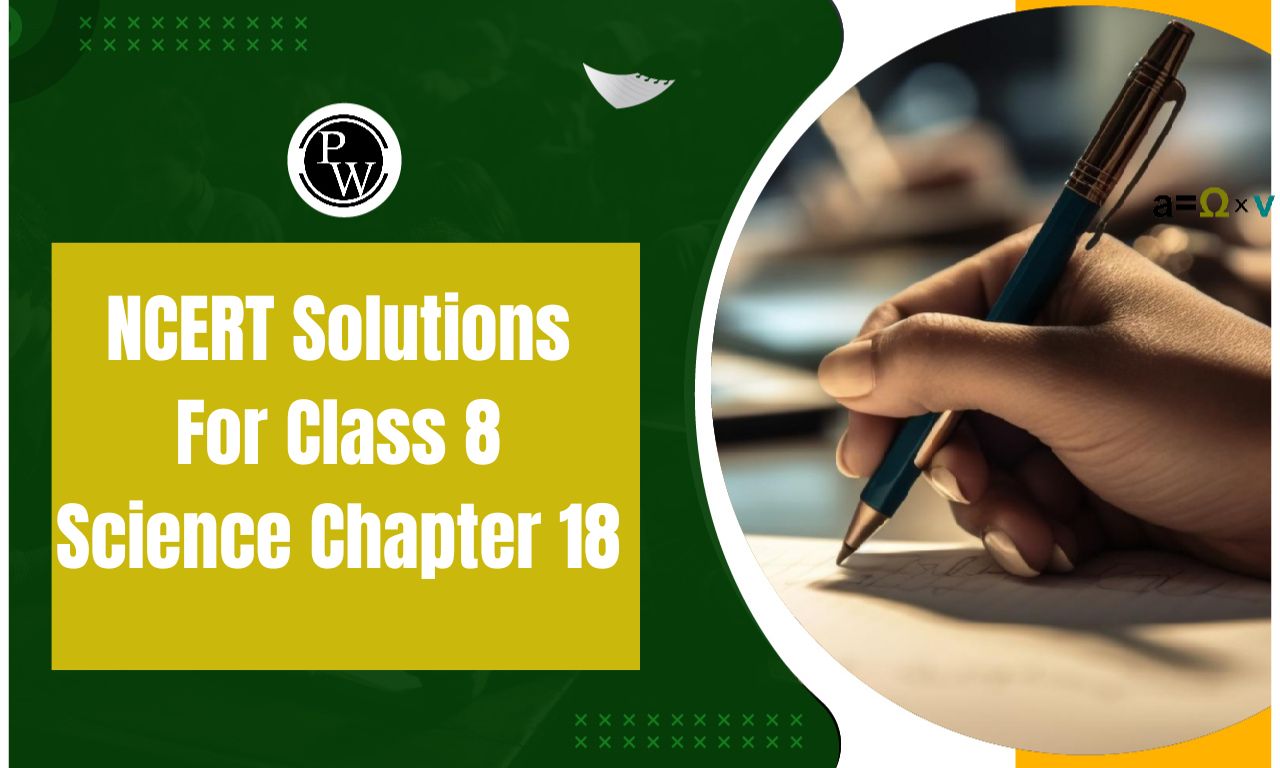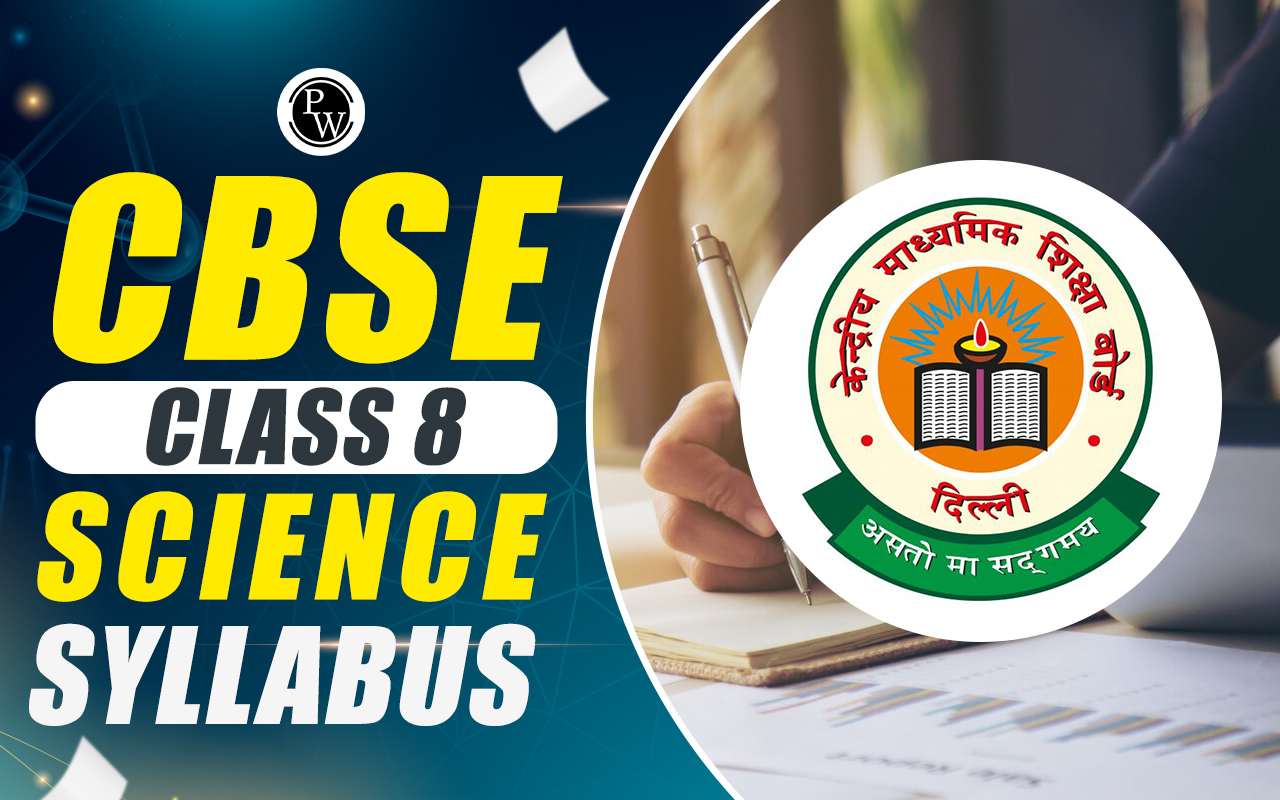
NCERT Solutions For Class 8 Science Chapter 18: Here are the NCERT Solutions for Class 8 Science Chapter 18: Pollution of Air and Water, to help students interactively learn the concepts. One of the subjects that comes up most frequently in Class 8 final exams and competitive exams is pollution of the air and water.
The answers to the questions in the NCERT Class 8 Science textbook are included in NCERT Solutions to Class 8 Science Chapter 18, Pollution of Air and Water. Additionally, there are multiple-choice questions (MCQs), descriptive response types, HOTS (Higher-Order Thinking Skills), and additional questions with their solutions. Expert teachers have produced the NCERT Solutions for Class 8 Science Topic 18 PDF so that students may comprehend the topic with ease. Students can quickly get this PDF to begin properly preparing for their impending exams. These NCERT Class 8 Science Solutions are written by our professionals in an approachable and clear style that aids students in finding the most effective solutions to their difficulties.NCERT Solutions For Class 8 Science Chapter 18 Overview
A Free PDF download of the NCERT Solutions for Class 8 Science (Chemistry) Chapter 18 - Pollution of Air and Water is available here, the best online coaching platform in India. All of the practice questions have answers provided by our knowledgeable teachers by NCERT (CBSE) requirements. Gain a comprehensive understanding of 'Pollution of Air and Water' through in-depth explanations. Get better grades by signing up with us to work with the top Class 8 Science tutors in India. Explore the vital subject of pollution, understand how it affects the air and water, and succeed academically with ease.NCERT Solutions For Class 8 Science Chapter 18 PDF
Here we have provided NCERT Solutions for Class 8 Science Chapter 18 for the ease of students so that they can just download the pdf and use it easily without the internet. These NCERT Solutions for Class 8 Science Chapter 18 will help students understand the chapter better.NCERT Solutions For Class 8 Science Chapter 18 PDF
NCERT Solutions For Class 8 Science Chapter 18
Here we have provided NCERT Solutions for Class 8 Science Chapter 18 for the ease of students so that they can prepare better for their exams.1. Suppose you are in a dark room
1. What are the different ways in which water gets contaminated?
The following is a list of the various ways that water can get contaminated: i) Industrial waste: Industries discharge hazardous chemical wastes into water sources. ii) Sewage waste: Waste products from toilets, laundry machines, and kitchens contaminate water. iii) Agricultural chemicals: Farmers employ excessive amounts of fertilisers and insecticides to increase crop yields. Water bodies become contaminated when these dangerous substances are carried to them by rain and floods.2. At an individual level, how can you help reduce air pollution?
To lessen air pollution, we can do the following: i) We should try to use public transit as much as possible instead of driving our cars. ii) Rather than burning the trash, we ought to properly dispose of it. iii) Steer clear of cars on shorter distances. iv) We ought to regulate the quantity of pollutants coming from automobiles and home chimneys. v) LPG and CNG should be used in place of petrol, diesel and petrol in our cars.3. Clear, transparent water is always fit for drinking. Comment.
No, we disagree with the assertion that clear water is always safe to drink. Although water may seem clean on the surface, it may still contain dissolved contaminants and microorganisms that can cause disease. As a result, before consuming the water, we advise filtering it by boiling it or using another purification method.4. You are a member of the municipal body of your town. Make a list of measures that would help your town to ensure the supply of clean water to all its residents.
We have taken the following actions to guarantee that the people of our town have access to clean water: a) We tidy the vicinity of the water pipes. b) The primary water supply must be constructed in a hygienic environment and need regular maintenance. c) Water purification requires the application of chemical techniques like chlorination.5. Explain the differences between pure air and polluted air.
Pure air is made up of 21% oxygen, 0.03% carbon dioxide, and 78% nitrogen. In addition to these, other gases include water vapour, argon, methane, and ozone. When dangerous compounds or gases, such as sulphur dioxide, carbon monoxide, nitrogen dioxide, and particulate matter, are added to the air, the air is said to be polluted.6. Explain circumstances leading to acid rain. How does acid rain affect us?
When fossil fuels like coal and diesel are used, pollutants like sulphur dioxide and nitrogen dioxide are emitted into the environment. These pollutants produce nitric acid and sulfuric acid, respectively, when they react with the water vapours in the atmosphere. These acids fall as precipitation and create acid rain. The consequences of acid rain a) The crops are destroyed. b) Dangerous structures, particularly the Taj Mahal and other white marble structures.7. Which of the following is not a greenhouse gas?
(a) Carbon dioxide
(b) Sulphur dioxide
(c) Methane
(d) Nitrogen
Soln:
The answer is (d) Nitrogen8. Describe the ‘Green House Effect’ in your own words.
Global warming, or the general rise in Earth's temperature, is caused by the greenhouse effect. The greenhouse effect is brought on by greenhouse gases. Gases that are considered greenhouses include water vapour, CO2, and methane. A portion of the solar radiation that reaches Earth is absorbed by it before being re-emitted into the atmosphere. The atmosphere's greenhouse gases capture these radiations and prevent the heat from escaping. This contributes to the survival of humans by keeping our world warm. On the other hand, an uncontrolled rise in greenhouse gas concentrations may cause the Earth's temperature to rise too high, resulting in global warming.9. Prepare a brief speech on global warming. You have to deliver the speech in your class.
Global warming is the term used to describe the rise in the average temperature of the Earth's surface. The rising concentration of greenhouse gases in the atmosphere is the cause of it. Among the greenhouse gases are water vapour, CO2, and methane. These gases keep our world warm and aid in human life by absorbing the solar radiation that the earth reflects. Global warming, however, can occur if these gases increase and raise the earth's temperature.10. Describe the threat to the beauty of the Taj Mahal.
Acid rain is the Taj Mahal's main hazard. The Taj, which is entirely composed of marble, reacts with acid rain when it rains, creating a powder-like residue that is eventually carried away by the rain. We call this condition marble cancer. In addition, the Taj Mahal marble is becoming yellow due to soot particles released from the Mathura oil refinery, which is close to Agra.11. Why does the increased level of nutrients in the water affect the survival of aquatic organisms?
The population of algae in the body of water increases excessively when the amount of nutrients in the body of water increases. These algae provide food for decomposers once they die. The amount of oxygen dissolved in the water body decreases as a result of this process, which uses a lot of oxygen. Fish and other aquatic life eventually perish as a result of this.Benefits of NCERT Solutions For Class 8 Science Chapter 18
Important NCERT Solutions Features The purpose of these solutions is to assist students in becoming proficient in their coursework. They are made by seasoned teachers who are excellent science instructors for eighth graders. Among the characteristics are:- Thorough explanations for every task and question, encouraging a better comprehension of the material.
- Presentation that is well-organized and easy to understand.
- Precise responses that correspond with the syllabus enhance pupils' self-assurance in their comprehension.
- Visual tools to help explain difficult ideas, such as pictures and diagrams.
- Extra pointers and advice to improve pupils' performance.
- Synopses of chapters for rapid editing.
- Resources that can be downloaded and used online for flexible study and revision.
NCERT Solutions For Class 8 Science Chapter 18 FAQs
What is the name of class 8 science chapter 18?
What are air pollution class 8 solutions?
What is water pollution class 8 science?













